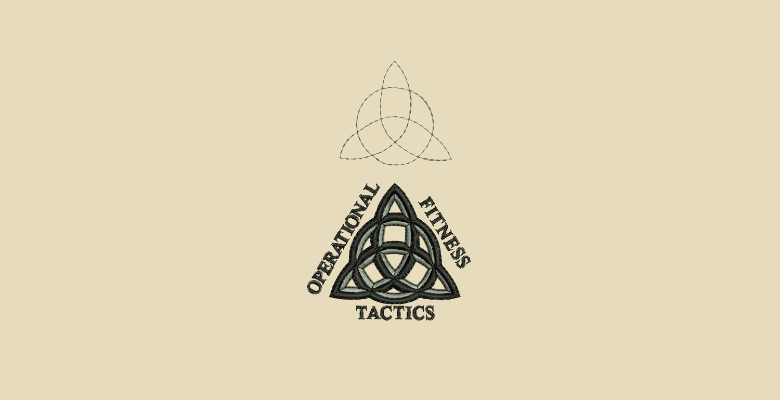
Underlay has four primary functions:
- Increasing the coverage of the topstitching to prevent the garment from showing through
- Lifting stitching above the texture of the ground fabric or the stitching below
- Helping hold the edge of topstitched elements to a defined contour
- Marrying a garment to the stabilizer below before a design runs
Underlay is a foundation layer on which to build the topstitching elements. A structural underlay of the correct type can allow you to reduce topstitching density while achieving complete coverage and clean edges, making for a lighter, more flexible, and yet wholly attractive finish.
Important note: You’ll need to use different types of underlay depending on the kind of topstitching you need to support.
Satin stitches
Satin stitches commonly require the following underlay types:
Center run: one or more lines of straight stitch following the center of the satin element, parallel to its edges.
Edge run or contour: a line of straight stitches running just inside the edges of a satin column to create a ‘rail’ on which the satin stitches catch and hold for a clean edge.
Zig-zag: a very low-density, widely spaced zig-zag of long stitches beneath the satin column at much less density than the topstitching. The angles of these stitches are often close to 45 degrees offset from the stitches of the satin element above.
Double zig-zag: two passes of opposing zig-zag angle underlay creating a diamond pattern for increased coverage.
German underlay: combining edge walk and double zig-zag underlay runs creates the German underlay, named after its use in German lacework. It provides edge support, dramatically lifts stitches above the ground, and holds down pile in textured materials.
Fill Stitches
Fill or tatami stitches are somewhat different. Though they commonly use edge run underlay for the same edge support as satin stitches, fill elements have a couple of unique underlay styles worth mentioning.
Fill (tatami): a much lower density fill stitch element that is inset somewhat from the edges of the topstitching fill element it supports. It runs at an angle opposing that of the topstitching so that every stitch in said final fill is held up by two or more stitches in the underlay.
Webbing (mesh): two stacked fill underlays of different angles, often set at opposing 45- and 135-degree angles to the topstitching, forming a mesh or net on which topstitches rest. This is supportive like the fill underlay but has even less chance of letting a topstitch sink. This underlay can be used as a ‘global’ underlay under an entire design to hold down the nap of a furry or loopy material like Terry to create a smooth stitching surface.
Stabilizing Garments
One underlay that is not structural or supportive like the rest is stabilizing underlay. It attaches garment material to your stabilizer, preventing unstable elements from shifting. When sequenced from the center of a design and moving toward the edges, it can smooth fabric like a tablecloth, preparing it for embroidery as well as preventing ripples and wrinkles in the finished piece. This is particularly useful for stretchy and light performance materials.
The Takeaway
Underlay is useful in almost all embroidery. Unless your garment is exceedingly stable, fine-grained, and forgiving, you are likely to need some underlay. If you think of your underlay as if you are building a foundation on which you will lay or wrap over your topstitching, you’ll understand just how it works. Think about your embroidery structurally and you’ll be ready to make the best of underlay. ?




